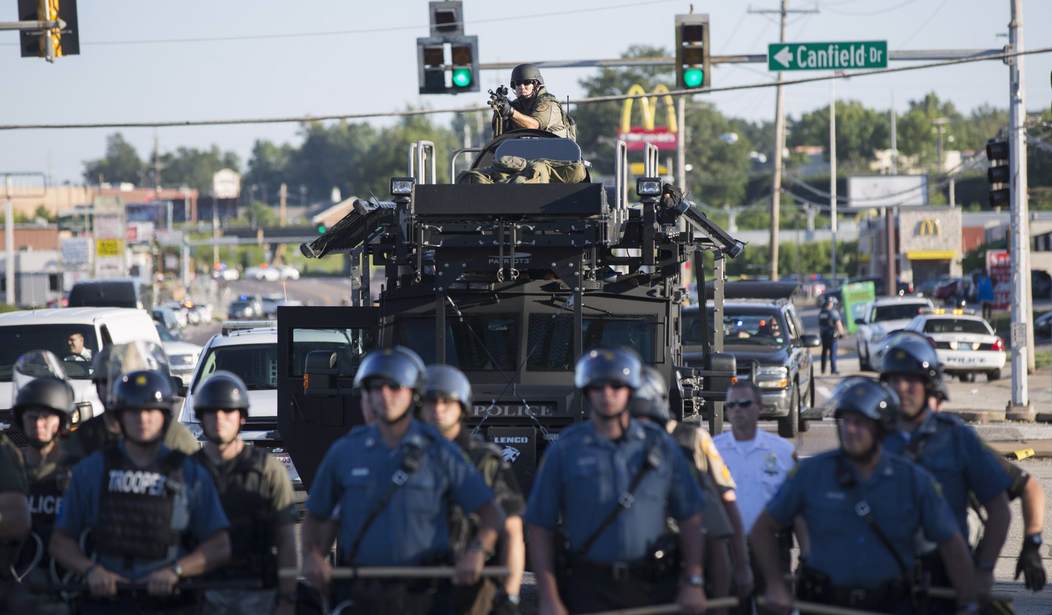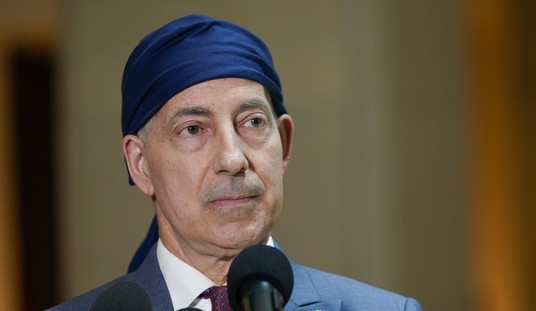WASHINGTON — The Senate Homeland Security and Government Affairs Committee heard today that nearly all states in the union have accepted billions worth of surplus military equipment for their law enforcement agencies, with Ranking Member Tom Coburn (R-Okla.) calling the creeping militarization of police “dangerous ground” that threatens to undermine “the very principles that built the country.”
“Protect and serve. Our founders saw no role for the federal government in state and local police forces. None. And yet we — what we have seen is, on the basis of what we saw on 9/11, what seems to be an overreaction and a progress to where the federal government in law enforcement is doing the same thing it’s done in every other area when it comes to the General Welfare Clause and the Commerce Clause,” Coburn said.
“It’s hard to see a difference between the militarized and increasingly federalized police force we see in towns across America today and the force that Madison had in mind when he said a standing military force with an overgrown executive will not long be a safe companion to liberty,” he added. “I have some real heartburn with not just the 1033 program, with the UASI grants, with the — some of the Justice Department grants, and with a lot of the Homeland Security grants in terms of how they’ve been utilized, what they’ve been utilized for.”
Chairman Tom Carper (D-Del.) stressed that the hearing wasn’t called to adjudicate the Michael Brown shooting case, but in light of the Ferguson protests the committee reviewed the $5 billion in surplus Defense Department equipment granted to police since 1997.
“These programs were established with a very good intention: to provide equipment that would help law enforcement perform their duties,” Carper said. “And the question is whether what our police receive match what they truly need to uphold the law.”
Fresh from a recess of protests in her home state, Sen. Claire McCaskill (D-Mo.) said she approached Carper about holding the hearing “because of the shock and sadness I felt as I saw events unfolding” in Ferguson.
“I think most Americans were uncomfortable watching a suburban street in St. Louis being transformed with vivid images, powerful images, across this country into a war zone, complete with camouflage, tear gas, rubber bullets, armored vehicles and laser sights on assault weapons,” McCaskill said.
“While this hearing may reveal many strong arguments why some of this equipment may be helpful for the safety of police officers in certain situations, I am confident that militarized policing tactics are not consistent with the peaceful exercise of First Amendment rights of free speech and free assembly,” she added, saying the Ferguson demonstrators “did not deserve to be treated like enemy combatants.”
McCaskill said Texas law enforcement agencies now have 73 mine-resistant ambush-protected vehicles handed down from the military, while the National Guard there has only six. In Florida, the National Guard has no MRAPs while police agencies have 45.
The Defense Logistics Agency also reported to the committee that about 36 percent of all equipment given to police by the DoD is brand new or like new. “Why are we buying things in the Department of Defense merely to turn around and give them away?” McCaskill asked.
Alan Estevez, the principal deputy undersecretary of Defense for acquisition technology and logistics, said the “transfer of excess property to law enforcement agencies is a congressionally authorized program designed to ensure good stewardship of taxpayer resources.”
More than 8,000 federal and state law enforcement agencies actively participate in the program, he said, in 49 states and three U.S. territories. Among the “controlled property” distributed to law enforcement over the past 12 months are more than 92,000 small arms, 44,000 night-vision devices, 52,000 Humvees, and 617 MRAPs.
“The department does not provide tanks, grenade launchers, sniper rifles, crew-served weapons, or uniforms. DOD has provided two Humvees, one generator, and one cargo trailer to the Ferguson Police Department. Additionally, DOD has provided to St. Louis county police departments six pistols, 12 rifles, 15 weapon sights, one ordinance disposal robot, 3 helicopters, 7 Humvees, and 2 night-vision devices,” Estevez said.
“Property obtained through this program has been used extensively both for protection of law enforcement officers and the public, as well as for first-responder disaster relief support.”
Estevez admitted “there’s probably a failure in coordination across the interagency regarding what we are providing.”
“We do, when, you know, there is missing equipment coordinate and let them know that kind of issue,” he said. “But coordinating on what police forces could use, that could be better.”
The administration’s review on the program is still in progress.
Coburn asked when any of this equipment has been used in a counterterrorism operation.
“I’m sure we could pulse the system for anecdotes on that, but I really would have to do that,” Estevez replied.
When Estevez characterized an MRAP as a “truck,” Coburn countered, “No, it’s not a truck. It is a 48,000-pound offensive weapon.”
“We give an MRAP, it is stripped of all its electronic warfare capability,” Estevez said. “It does not have a 50-caliber weapon on it. It is not an offensive weapon. It is a protective vehicle.”
McCaskill presented a “long list” of law enforcement agencies that received three times as many military-grade weapons as they have full-time officers.
Sen. Rand Paul (R-Ky.) said “many of us were horrified by some of the images that came out of Ferguson.”
“We were horrified by seeing an unarmed man with his hands over his head being confronted by an armored personnel carrier. We’re horrified by seeing an unarmed man with his hands over his head being confronted by a man with a drawn assault weapon. We’re horrified by images of tear gas being shot into the yards of people’s personal homes who were protesting,” Paul said.
“One of the fundamental things about America is dissent, and the ability to have dissent. And it needs to be peaceful and there needs to be repercussions for people who do not act in a peaceful way. But confronting protesters with armored personnel carriers is thoroughly un-American, and for 150 years we’ve had rules separating the military — keeping the military out of policing affairs. But you sort of obscure that separation if you allow the police to become the military.”
Paul said that after spending “billions and billions” on equipping the police departments, “we’ve had maybe two instances of terrorism.”
The senator noted that an NPR investigation of the program revealed 12,000 bayonets have been given out. “What purpose are bayonets being given out for?” he asked.
“Senator, bayonets are available under the program,” Estevez responded. “I can’t answer what a local police force would need a bayonet for.”
“I can give you an answer: None,” Paul shot back.
“I find these decisions to be very easy to make. You just shouldn’t be giving out mine-resistant vehicles. Bayonets, there’s no excuse. I don’t know why we have to get together and have a study for months to decide bayonets are inappropriate to be given out. There’s a — I can’t imagine any use for a bayonet in an urban setting,” the senator continued.
“It’s gotten out of control. And this has largely been something that the militarization of police is something that has gotten so far out of control, and we’ve allowed it to descend, along with not a great protection of our civil liberties as well.”








Join the conversation as a VIP Member